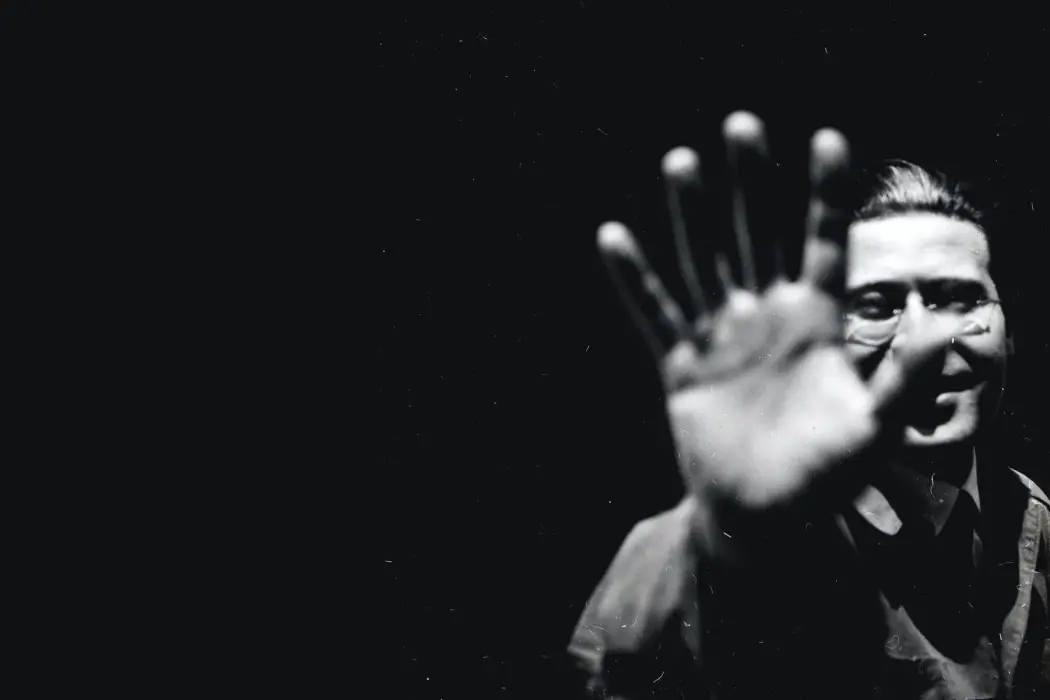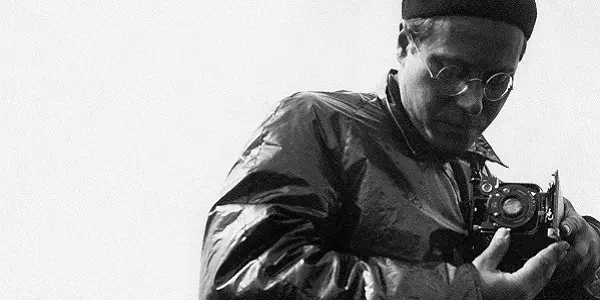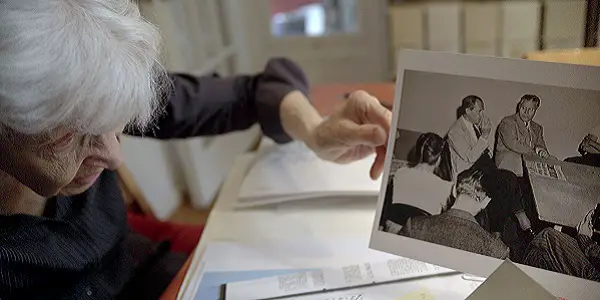THE NEW BAUHAUS: The Legacy Of László Moholy-Nagy

Lee Jutton has directed short films starring a killer toaster,…
The revolutionary German art school known as the Bauhaus (1919-1933) was unique for its time in the way its curriculum combined the applied and fine arts, teaching students to create works that could satisfy both form and function. The idea, championed by Bauhaus founder Walter Gropius and other luminaries at the school, was that even mass-produced, everyday items used by ordinary folks in the home could be aesthetically pleasing; instead of pitting fine artists against commercial designers, they taught their students to embrace both of those mindsets simultaneously.
In 1923, Hungarian artist László Moholy-Nagy was invited by Gropius to teach at the Bauhaus. While his tenure at the school was short-lived courtesy of the increasing Nazi influence in Germany (which spelled the end of the Bauhaus altogether in 1933), Moholy-Nagy continued to preach the gospel of the Bauhaus – not to mention his own incredibly forward-thinking ideas about the role of technology in art – by founding a similar school in Chicago that continues to shape art and design to this day. The New Bauhaus, a documentary feature directed by Alysa Nahmias, is a fittingly creative exploration of the legacy of Moholy-Nagy, an artist who never became a household name and yet whose life’s work is nonetheless ever-present in our lives today.
Happiness in Modernity
It’s hard to think of a filmmaker better suited to take audiences on a deep-dive into Moholy-Nagy and his New Bauhaus than Nahmias; her previous documentary feature, Unfinished Spaces, chronicled the legacy of another radical art education experiment, Cuba’s National Art Schools. Jumping back and forth in time and across the Atlantic, Nahmias pieces together Moholy-Nagy’s life and career in a way that, much like the man himself, is occasionally messy but always engaging. Instead of neatly organizing her film chronologically or otherwise, Nahmias essentially creates a mood board of Moholy-Nagy‘s life and legacy, bouncing around his childhood in a remote Hungarian village, his time serving in World War I, which convinced him to abandon his plans of becoming a lawyer and instead become an artist, and his move to Germany and involvement with the Bauhaus. The artist’s own words are spoken in The New Bauhaus by art critic and curator Hans Ulrich Obrist, who appears onscreen speaking formally into a microphone, accentuating the artifice of the scenario (a much better choice in my view than, say, recreating Moholy-Nagy’s voice with AI).

Moholy-Nagy was a relative upstart in the art world at the time Gropius hired him to teach at the school, yet what he lacked in name recognition he made up for in creative experimentation. Moholy-Nagy believed that technology was the future in all aspects of life, including art, and strove to incorporate the latest methods of creation into his work; his ethos as both an artist and an educator was that artists should learn to live “happier lives in modernity”. He pioneered photography as an art form before anyone else thought of it as such, arguing that in the future, one would be considered illiterate for not understanding it. Moholy-Nagy would sketch out geometric designs that he would then send to a ceramics studio, which would bring his visions to life; the notion that one could be an artist without being the one physically creating the art was a radical one for its time, and one that is much more widely accepted today.
An Unfinished Canvas
After leaving the Bauhaus, and then Germany altogether, Moholy-Nagy found himself in Chicago, a city he later described as “not only an unfinished canvas, it is a smeared-over sketch which I have to clear up and set straight”. Accompanied by his second wife, Sibyl — a formidable woman and art critic whose support, the film doesn’t hesitate to tell us, was crucial to Moholy-Nagy’s success — and his two daughters — the eldest, Hattula, appears in The New Bauhaus and provides a lovely personal take on her father’s legacy — Moholy-Nagy settled down in the Windy City and opened The New Bauhaus in 1937. That school lives on today as the renowned Institute of Design, and its alumni have played key roles in the creation of many things we take for granted in our daily lives.
The iconic curved shape of a Dove soap bar? It was designed by a Moholy-Nagy disciple, inspired by a lesson in which students created wooden sculptures designed to fit the shape of the human hand. The Honey Bear bottle? Its creator also came from the Institute of Design. Other alumni would go on to design the first Playboy magazine covers and James Bond film opening credits sequences, while still others would become fine art photographers and teachers. When the United States entered World War II, Moholy-Nagy challenged his students to find ways to design items with alternative materials that weren’t rationed due to the war effort, and to create innovative new products that would make lives easier for women whose husbands were away fighting.

Many of that first group of students at the Institute of Design — those who were privileged to learn from Moholy-Nagy first-hand — appear in The New Bauhaus, describing their memories of their teacher and showing off the work they created both under his tutelage and long afterward. Their presence in The New Bauhaus is powerful in showing the viewer how formative Moholy-Nagy’s influence was then and still is today. The tragedy of his death from leukemia in 1946, at the age of 51, is that we’ll never know what else he personally could have accomplished as technology jumped forward by leaps and bounds in the latter half of the twentieth century; no doubt he would have thrived on figuring out ways to create art in the digital world.
One of the many art history talking heads interviewed for The New Bauhaus suggests that Moholy-Nagy’s never-ceasing drive to experiment is part of the reason why his name is less renowned than that of many of his contemporaries; instead of focusing on and perfecting his work in one particular medium, he explored how they all could fit into his particular artistic philosophy, including film, sculpture, and graphic design. But as the film shows us, just because more people know the name Picasso than Moholy-Nagy doesn’t mean that he had any less of an impact on the world of art; if anything, his focus on not just creating, but educating future generations of creators, has ensured his place in history.
Conclusion
While the central thesis of The New Bauhaus appears to be that Moholy-Nagy is unfairly unappreciated in the art world, the film acknowledges that he has recently been the subject of several wide-ranging retrospectives. Yet I thought the most telling bit in the film was when one of his former students said that she thought a recent exhibition focused on his work was a letdown; she claimed it was too formalized, and thus entirely unlike the man himself. Moholy-Nagy would never have placed himself in such easy-to-understand boxes as the clearly labeled and organized rooms of a formal retrospective. The strength of The New Bauhaus is that it doesn’t try to do that either.
What do you think? Are you familiar with the works of László Moholy-Nagy? Share your thoughts in the comments below.
The New Bauhaus was released on select VOD platforms on July 20, 2021.
Watch The New Bauhaus
Does content like this matter to you?
Become a Member and support film journalism. Unlock access to all of Film Inquiry`s great articles. Join a community of like-minded readers who are passionate about cinema - get access to our private members Network, give back to independent filmmakers, and more.
Lee Jutton has directed short films starring a killer toaster, a killer Christmas tree, and a not-killer leopard. Her writing has appeared in publications such as Film School Rejects, Bitch: A Feminist Response to Pop Culture, Bitch Flicks, TV Fanatic, and Just Press Play. When not watching, making, or writing about films, she can usually be found on Twitter obsessing over soccer, BTS, and her cat.













